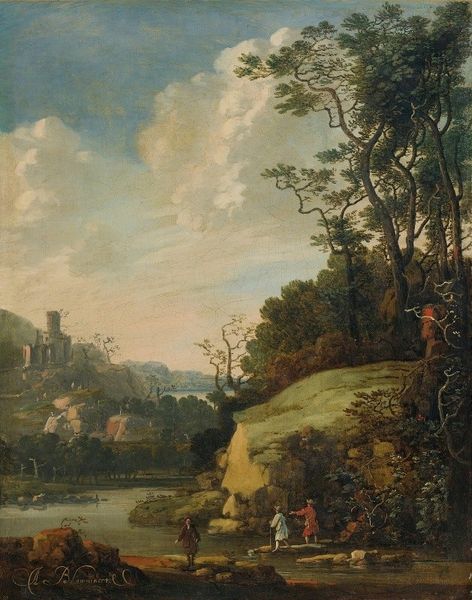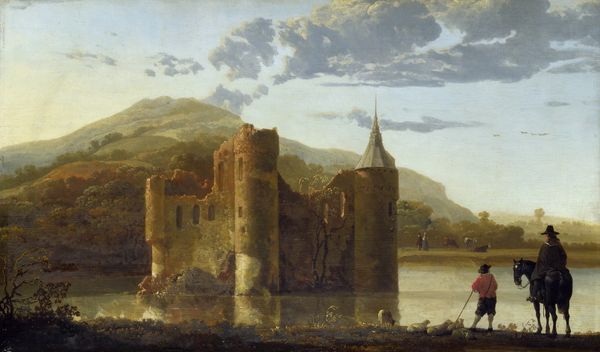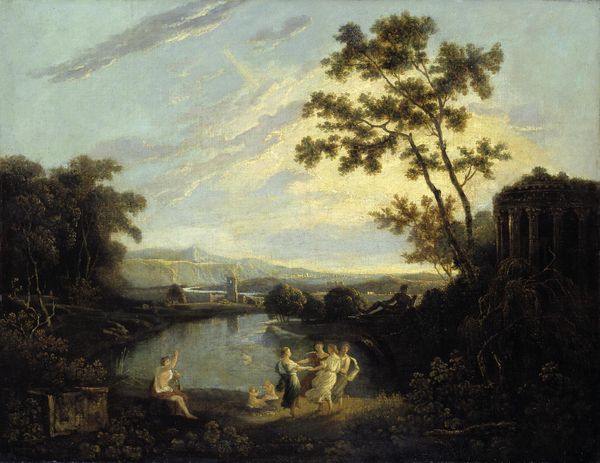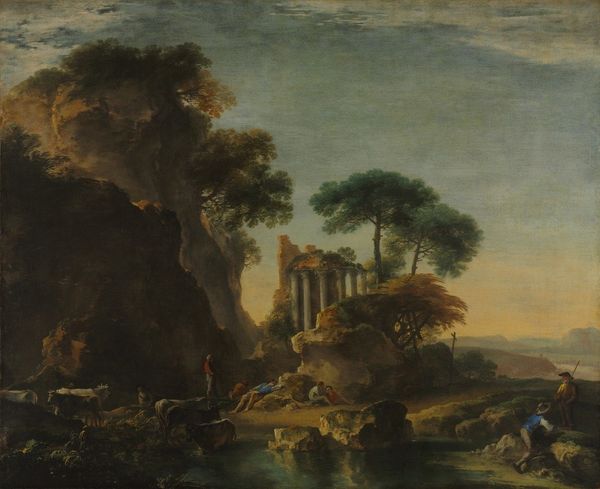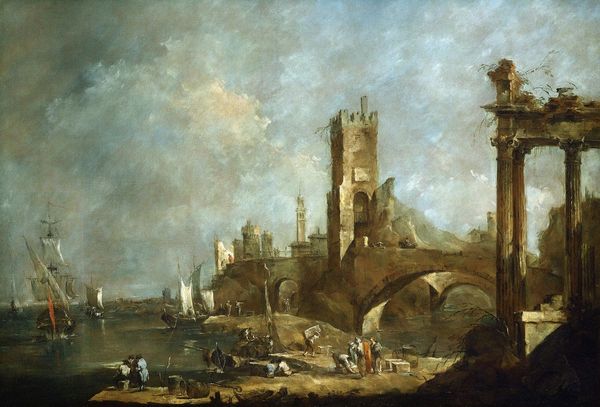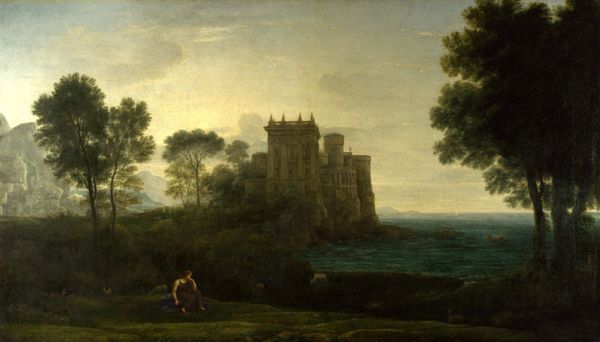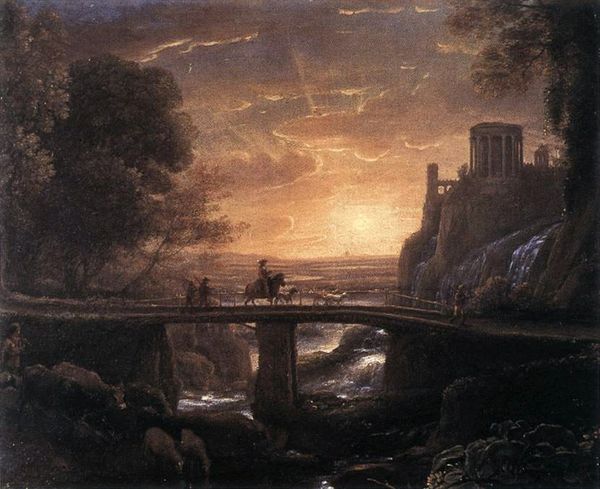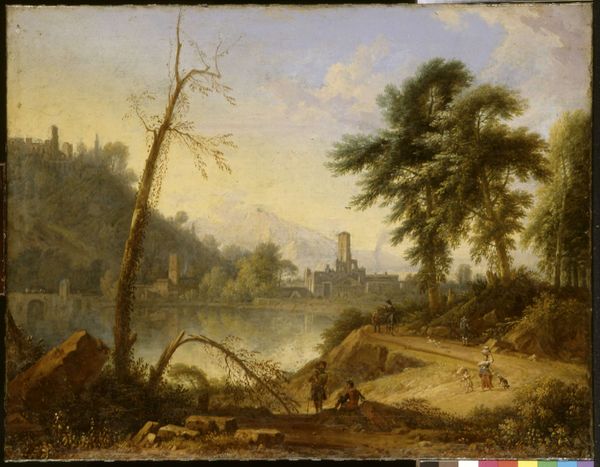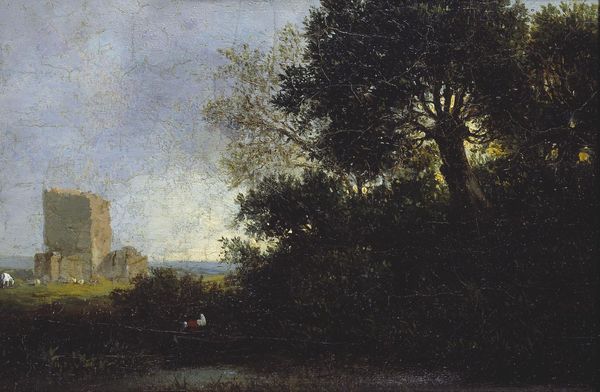
Copyright: Public domain
Claude-Joseph Vernet painted this evocative scene awash with moonlight. The ruined tower, a potent symbol, anchors the composition. It speaks to the transience of human endeavor, an architectural memento mori. Similar ruins appear throughout art history, from Piranesi's etchings to Romantic paintings. They evoke a sense of melancholy and reflection on time's relentless march. The tower’s silhouette against the moonlit sky conjures up a kind of sublime emotion, a mix of awe and existential dread. Consider the recurring motif of ruins in art, each time imbued with the cultural anxieties and philosophical musings of its age. In Vernet’s time, the ruin is not merely a remnant of the past but a stage upon which the drama of human existence unfolds. This scene captures our collective consciousness, and speaks to our subconscious awareness of mortality and change.
Comments
No comments
Be the first to comment and join the conversation on the ultimate creative platform.


